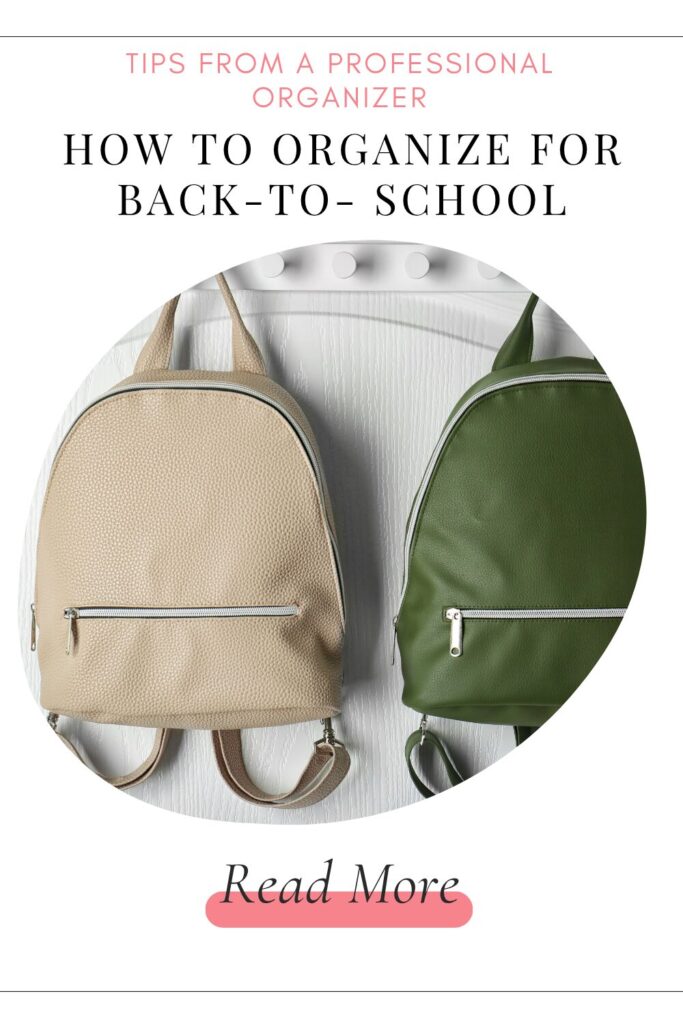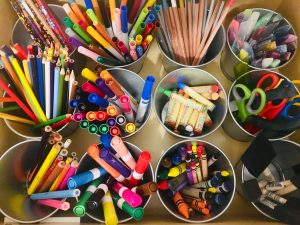The back-to-school season can feel chaotic—early mornings, homework battles, forgotten lunchboxes. But with a little organization, the transition doesn’t have to be overwhelming. As a professional organizer (and mom), I’ve helped dozens of families create smoother school-year systems that reduce stress and boost productivity.
Whether your kids are in preschool or high school, here are my top back-to-school organization tips to get your home and routine running like clockwork.
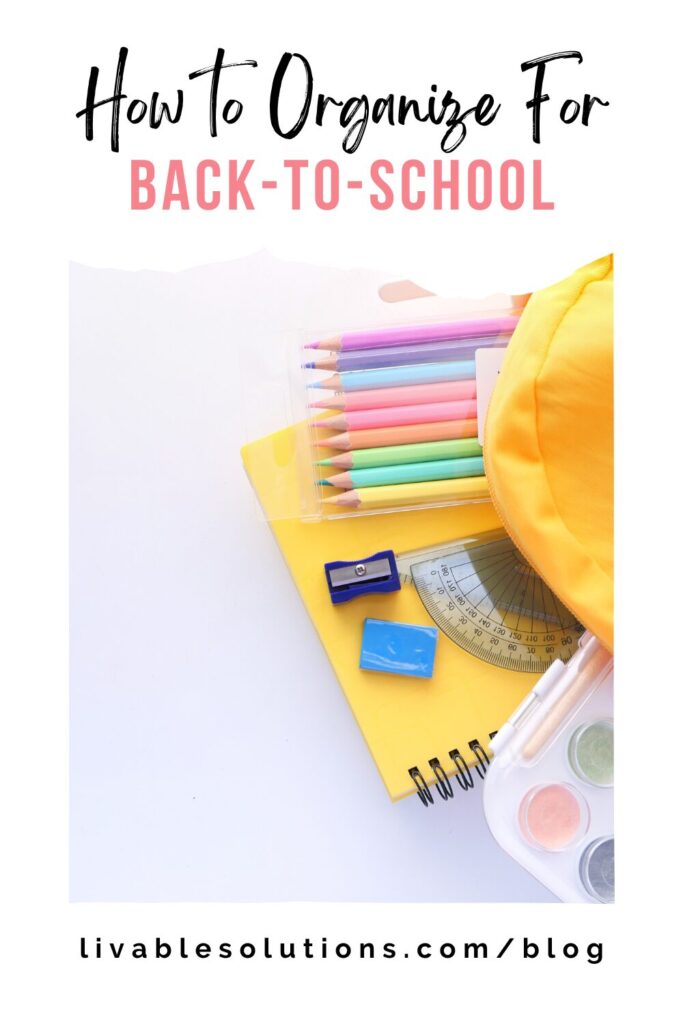
1. Create a Command Center
Designate one place in your home for all school-related materials. This “command center” should include:
- A family calendar (digital or dry-erase)
- A bin, file folder or rack for incoming school papers
- Hooks for backpacks
- A container for permission slips, lunch money, and field trip forms
- A charging station for tablets and phones
In our home we use a digital calendar for all family activities that my husband and I share. We have a Google calendar for each of our kids and a calendar for our general non-work related activities. What I love about using multiple calendars is that you can turn them on or off when you do not want to see everything at once. You can also color code them by person.
Our home did not have a mudroom so we took a wall on the way to our bathroom off the kitchen and created two tiers of hooks to hang backpacks and coats by installing some board and batten. It was a great way to maximize unused vertical space in a small hallway. It only cost a few boards of 1″x4″ wood, hooks from Amazon and some paint. In addition, it added a nice custom look to a boring hallway. Having a place for the kids to hang their gear as soon as they walk in helps everyone with the daily routine of emptying bags instead of dumping them on the floor.
👉 Pro Tip: Use labeled wall-mounted file folders or a hanging wall organizer to separate paperwork by child.
2. Streamline School Supplies
Don’t wait for the first day of school chaos. Inventory what you already have at home and shop only for what’s missing. Then:
- Use drawer dividers or small bins to organize pencils, markers, scissors, and glue
- Create a portable homework caddy or a desk drawer just for schoolwork
- Store extras in a clearly labeled backstock bin in a closet or cabinet

I have created two areas in my home streamline school supplies. First, I created kids crafting/homework station on a round table in my porch/office. Check out this blog for more details: How to Create a Kids Crafting Station
The second area is a storage area for crafting and school supplies. I took an old tv armoire and had my husband add some shelving inside of it. Using clear bins and drawers to sort all the categories makes it much easier to find paper, glue and colored pencils before we go out and buy even more. And when the teachers send back many of the unused supplies at the end of the year, I sort them right back into my inventory.
3. Organize Clothing by Outfit
Mornings are smoother when clothes are ready to go. Here’s how:
- Use a five-slot hanging closet organizer to plan a week’s worth of outfits
- Add weather-appropriate items like rain boots or jackets nearby
- Include undergarments and socks in each day’s slot for no excuses
📦 Need help sorting kids’ clothes by size or season? Try my Kids Clothing Organizer Printable.

For even more organizing tips for kids clothing check out my recent blog: How to Organize Kids Clothing for Back to School
4. Prep the Pantry for Easy Lunch Packing
A little meal planning can go a long way in the school year.
- Stock bins with grab-and-go snacks: fruit cups, granola bars, trail mix
- Pre-pack sandwich bags of veggies, crackers, or fruit
- Store lunchboxes and water bottles in one accessible cabinet
🥪 Create a weekly lunch planner to avoid the “what do I pack?” – check out our Lunch Box Printable in my Child Information Organizer.
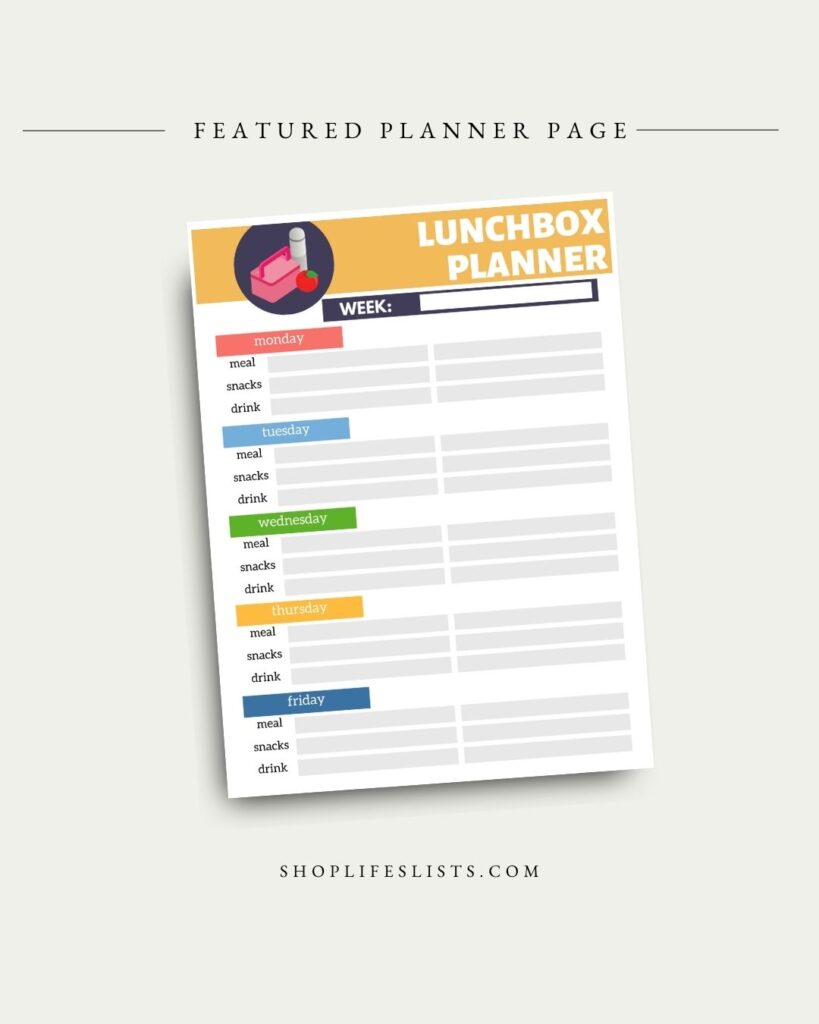
Meal planning is one of the number complaints I hear from parents struggling to balance it all. In fact, even with all of my systems I still dread that question “What’s for dinner tonight?” Planning meals and lunches ahead of time before you shop for the week really helps with weekday stress. It allows you to be prepared with what you need to easily execute your meals as well as have family members step in easily when you need to delegate.
I have lots of great meal planning ideas and recommended kitchen items that really help. Check out my latest blog related to meal prep: Easy Summer Meal Prep Tools
5. Establish After-School Routines
Kids thrive on structure. Set expectations for what happens after school:
- Shoes go in a bin or shoe rack near the door
- Backpacks are emptied into the command center
- A consistent time and space is used for homework
- Use timers or checklists for kids who need visual reminders
🕒 Consider using a visual schedule or routine chart for younger kids or those with executive functioning challenges.
Like many households, my kids jump of the bus and want to run out to play with friends or start jumping on screens. However, they know they have to complete a few quick chores when they walk in the door. The expectations immediately afterschool are to get their backpack on a hook (not on the floor by the door). We have them empty it, place their lunch boxes on the counter and hand their school forms/notes to me for review. Even if smaller kids need help, helping them with the routine will build the muscle memory for the future years.
Parents need an afterschool routine too. I try to respond to any forms immediately and hand them back to put straight in their backpacks. If the paper is informational and I need to reference it again I put it in my “School” folder on my desk. It is really helpful to grab the day of a field trip or to find a school email address. If there is an event coming up that isn’t already on the calendar from our school’s digital calendar feeds I enter it on my calendar to flag it. I even use my digital to do list to set reminders, This works great so I don’t forget I need to dress the kids for school spirit day.
For more information on how to maximize a digital to do list check out this blog: How to Use Todoist to Organize Your Tasks and Supercharge Your Productivity
6. Declutter Kids’ Paperwork & Keepsakes
Avoid paper piles before they start. Create a system:
- Toss junk mail and unnecessary papers daily
- Keep only the most meaningful artwork or assignments
- Store special items in a labeled keepsake bin by grade
📁 Our Kids Memorabilia Printable Filing System makes it easy to sort, store, and celebrate milestones.

This is a hard one for many parents. I like to prioritize only the most important school memories when I decide on saving a paper. I always print or digitally save copies of report cards. I take pictures of special artwork and save only the most impressive pieces for temporary display. I like to save samples of their writing and any noteworthy projects. I limit each one kid to one plastic file box with hanging folders for each school year. I place the school paperwork, special notes from friends or family and their school pictures in each folder. If it gets to full, I look back and see if any of the paperwork still holds them same sentimental meaning and cull it more.
For more tips on how to create a Kids Memorabilia box check out this blog: How to Create a Kids Memorabilia Box
7. Do a Tech Check & Station Setup
Ensure devices are ready for school:
- Update software and charge all tech the weekend before school starts
- Assign a dedicated place for each child’s Chromebook, tablet, or calculator
- Store cords in labeled pouches or a zip-up electronics case
🔌 Pro tip: Use a multi-charger station to prevent arguments over outlets.
Last year my son’s teacher sent an update every week about the assignments ahead. And every week there was a bold yellow reminder to send your kid’s Chromebook to school charged. It made me chuckle every time because I knew they were constantly running into unprepared middle schoolers (which does not surprise me at all having one myself).
Again, creating a routine afterschool is key. My son has a designated spot with a computer charging cord. Part of his daily routine unpacking his backpack is putting his Chromebook on the charger. The chargers is near where his backpack purposely to remind him to take the computer back to school in the morning.
8. Practice the Routine Before School Starts
Start bedtime and wake-up routines at least a week before the first day of school. Test drive your morning schedule, commute, and lunch-packing process. I cannot emphasize this more as a parent who lets her kids completely run rogue without a regular bedtime schedule in the Summer. It is a rude awakening (literally) not being able to sleep until 9 or 10 in the morning once school starts. We start early because we must retrain them for our more rigid school year routine.
This “dry run” helps you spot problems and gives everyone time to adjust before the real stress kicks in.
Final Thoughts
Organization isn’t about perfection—it’s about preparation. The more systems you put in place now, the more smoothly your school year will flow. As a professional organizer and mom, I know it takes a little upfront effort to get ahead, but it pays off in calm mornings, confident kids, and a whole lot less stress.
Happy Organizing!
Kristin
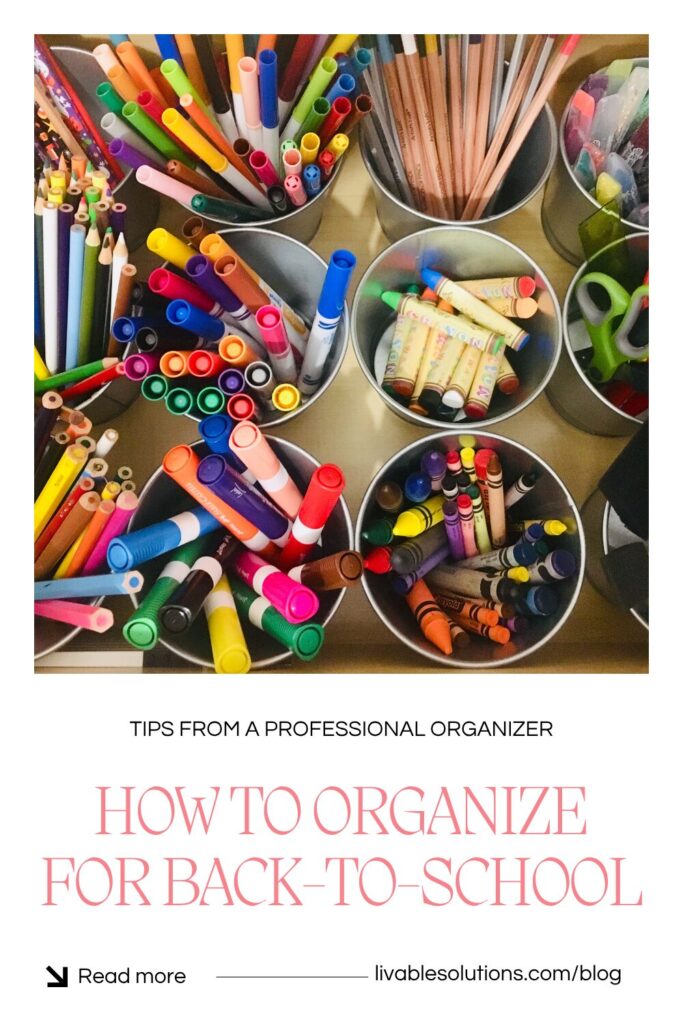
Disclosure:
This post contains affiliate links. I earn from qualifying purchases, at no extra cost to you! Thank you for supporting this blog and making content like this possible.
